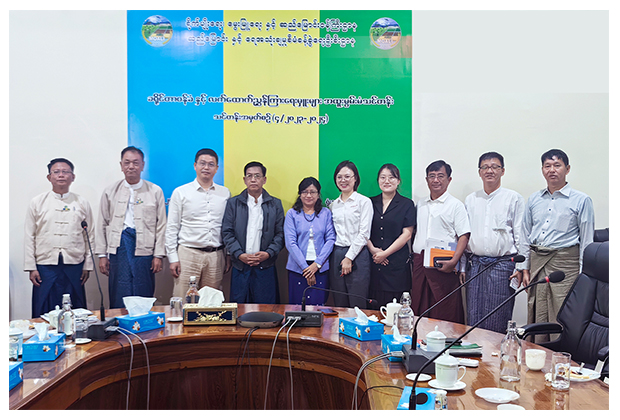Government Incentives: Myanmar’s new Renewable Energy Law (2024) provides tax incentives for solar energy projects.
✅ Energy Access: More than 60% of rural areas lack reliable electricity—solar energy offers a vital solution.
✅ Market Potential: With a national target of 8% renewable energy by 2030, the market presents significant growth opportunities.
The Myanmar government is actively promoting the development of solar energy to address the dual challenges of long-standing energy shortages and agricultural irrigation difficulties. Over 60% of the country’s rural population relies on agriculture for their livelihoods, but insufficient electricity supply has severely constrained irrigation capabilities and farming productivity. To tackle this, the government launched the "Solar + Agriculture" strategy in 2020, implementing multiple solar-powered agricultural irrigation projects ranging from 110 kW to 350 kW.  These projects are primarily deployed in central agricultural regions prone to frequent droughts. For example, in Yangon Region, a 110kW solar-powered pump station was constructed near Sinphon Village, Hlegu Township, providing irrigation for 1,016 acres of farmland. Operating seven hours daily, it saves 770 kWh of electricity per day. Over the entire summer rice season, this results in a total savings of 77,000 kWh, equivalent to approximately 11.55 million Myanmar Kyat in electricity costs. In Magway Region, the government installed a 132kW solar power generator at the Nan Zu Pin River Pump Station in Aunglan Township to supply irrigation water for local farmland. Additionally, in the villages of Yaepawthaung and Thabyaytan in Yangon Region, the government deployed two sets of 160kW solar-powered pump systems. These systems irrigate 2,650 acres of summer rice fields, operating seven hours daily. Over the summer rice season, they save 112,000 kWh of electricity, amounting to roughly 16.8 million Myanmar Kyat in electricity costs.
These projects are primarily deployed in central agricultural regions prone to frequent droughts. For example, in Yangon Region, a 110kW solar-powered pump station was constructed near Sinphon Village, Hlegu Township, providing irrigation for 1,016 acres of farmland. Operating seven hours daily, it saves 770 kWh of electricity per day. Over the entire summer rice season, this results in a total savings of 77,000 kWh, equivalent to approximately 11.55 million Myanmar Kyat in electricity costs. In Magway Region, the government installed a 132kW solar power generator at the Nan Zu Pin River Pump Station in Aunglan Township to supply irrigation water for local farmland. Additionally, in the villages of Yaepawthaung and Thabyaytan in Yangon Region, the government deployed two sets of 160kW solar-powered pump systems. These systems irrigate 2,650 acres of summer rice fields, operating seven hours daily. Over the summer rice season, they save 112,000 kWh of electricity, amounting to roughly 16.8 million Myanmar Kyat in electricity costs.
By replacing traditional diesel-powered irrigation systems with solar-powered water pumps, these initiatives have significantly reduced farmers’ costs and improved water-use efficiency. Each solar system can irrigate 100 to 300 acres of farmland, driving increased agricultural output and income. Additionally, the projects have created local employment opportunities and enhanced rural electrical infrastructure.
The strategy aligns with Myanmar’s "2030 Solar Energy Plan," which aims to achieve a national solar installed capacity exceeding 3 GW by 2030 and raise rural renewable energy adoption to over 70%. Through policy support, international collaboration, and technological localization, Myanmar is gradually overcoming its energy constraints and building a greener agricultural framework. The solar-agriculture model is emerging as a critical pathway for the country to advance sustainable development and climate resilience.
Post time:2025-05-09





